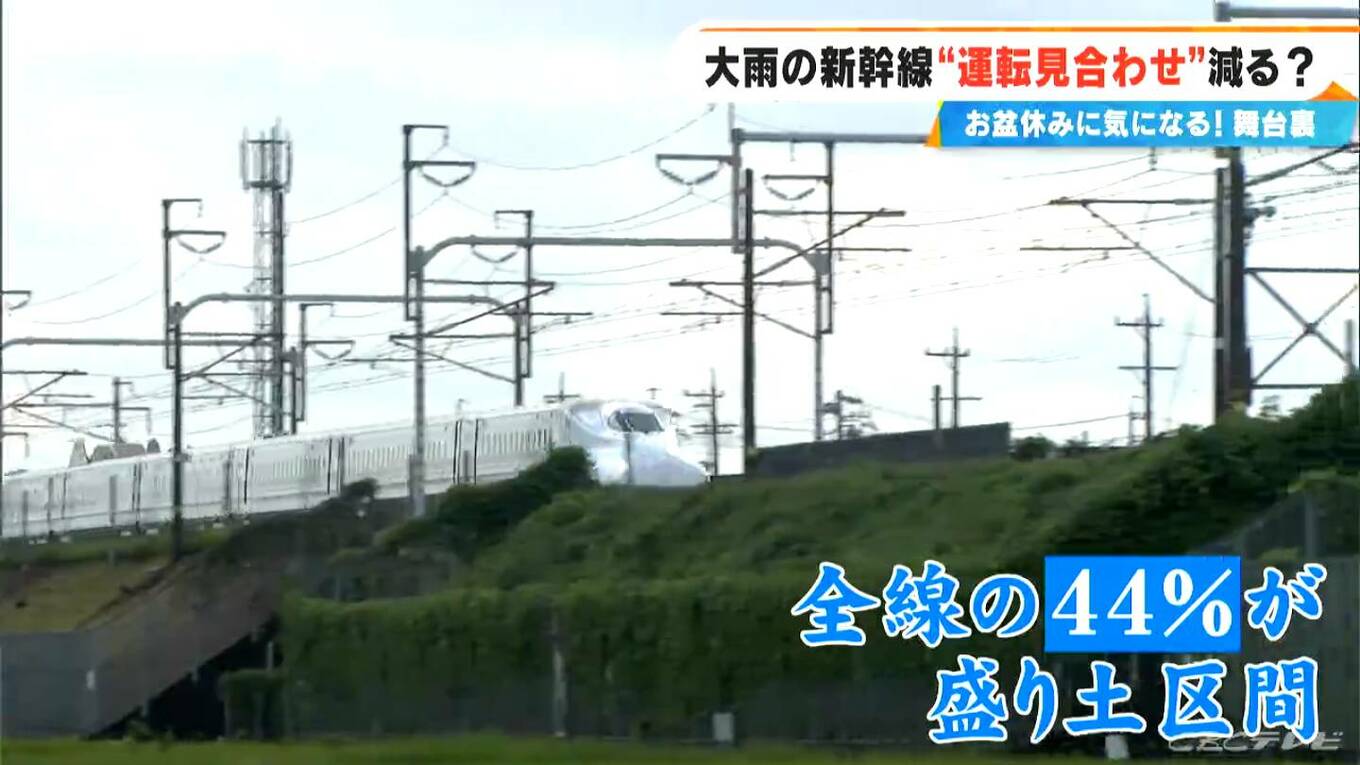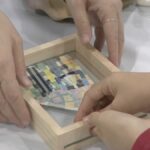What should have been a joyful Obon holiday was significantly impacted by heavy rain in Kyushu and the Chugoku region, causing major disruptions to Shinkansen operations.
In recent years, prolonged heavy rainfall, such as from “linear precipitation bands,” has increased. JR Central has been conducting experiments at a research facility in Komaki City, Aichi Prefecture, to revise the criteria for suspending operations during such extreme weather.
Here, they are conducting an unprecedented heavy rain experiment—simulating rainfall of 200 mm per hour, far exceeding Japan’s observed record of 153 mm. Under this waterfall-like downpour, they are thoroughly collecting data on how much moisture the embankments can withstand.
Recent rainfall patterns have become more intense. The goal is to assess the current embankments’ resilience under extreme conditions.
Tokai Shinkansen
The Tokaido Shinkansen, also known as the “bullet train,” is a high-speed railway line in Japan that connects Tokyo and Osaka. Opened in 1964 for the Tokyo Olympics, it was the world’s first high-speed rail line and remains one of the busiest. It revolutionized rail travel with speeds exceeding 200 km/h (124 mph) and symbolizes Japan’s post-war technological advancement.
Obon holiday
The Obon holiday is a traditional Japanese Buddhist event held annually in mid-August (or July in some regions) to honor the spirits of ancestors. It is believed that during Obon, the spirits of the deceased return to visit their living relatives, who welcome them with rituals, dances (Bon Odori), and offerings. The festival has roots in Buddhist teachings and has been celebrated in Japan for over 500 years, blending religious customs with family gatherings and community festivities.
Kyushu
Kyushu is the third-largest island of Japan, located southwest of the main island of Honshu. Known for its active volcanoes, hot springs, and rich history, it was an early center of Japanese civilization and played a key role in trade with Korea and China. The region is also home to historic cities like Fukuoka, Nagasaki (a former Portuguese and Dutch trading port), and Kumamoto, with its famous castle.
Chugoku region
The Chugoku region, located in western Honshu, Japan, is known for its rich history, scenic landscapes, and cultural landmarks. It includes Hiroshima, site of the atomic bombing in 1945 and now home to the Peace Memorial Park, as well as the ancient city of Kurashiki with its well-preserved Edo-period district. The region also features the iconic Itsukushima Shrine on Miyajima Island, a UNESCO World Heritage Site famous for its “floating” torii gate.
Shinkansen
The **Shinkansen**, also known as the “bullet train,” is Japan’s high-speed rail network, first launched in 1964 for the Tokyo Olympics. Renowned for its speed, punctuality, and safety, it revolutionized rail travel and became a symbol of Japan’s technological advancement. Today, the Shinkansen connects major cities across Japan, with speeds exceeding 300 km/h (186 mph) on some lines.
JR Central
JR Central, officially known as Central Japan Railway Company, is a major railway operator in Japan established in 1987 after the privatization of the Japanese National Railways. It is renowned for operating the Tokaido Shinkansen, the world’s first high-speed rail line, connecting Tokyo, Nagoya, and Osaka. JR Central plays a vital role in Japan’s transportation network and is also developing the futuristic Maglev Chuo Shinkansen, set to be the fastest train in the world.
Komaki City
Komaki City, located in Aichi Prefecture, Japan, is known for its historical significance and cultural heritage. It is home to **Komaki Shrine**, a Shinto shrine with ties to the legendary samurai **Oda Nobunaga**, who built Komakiyama Castle nearby in the 16th century. Today, the city blends its rich past with modern industry, including aviation and manufacturing.
Aichi Prefecture
Aichi Prefecture, located in central Japan, is a vibrant region known for its industrial prowess, rich history, and cultural heritage. It is home to Nagoya, the fourth-largest city in Japan, and historic sites such as Nagoya Castle, built in 1612 by the Tokugawa shogunate. Aichi is also famous for its traditional crafts, like Seto pottery, and as the birthplace of Toyota, a global automotive leader.






